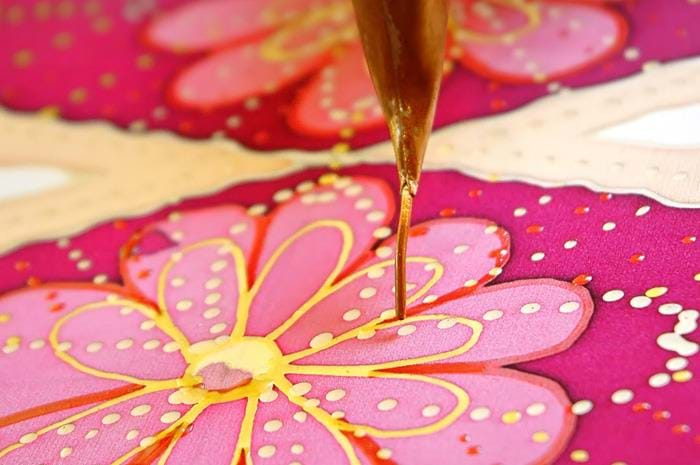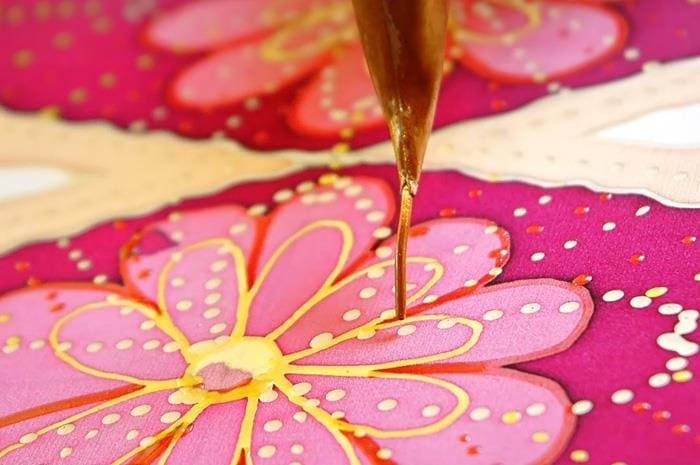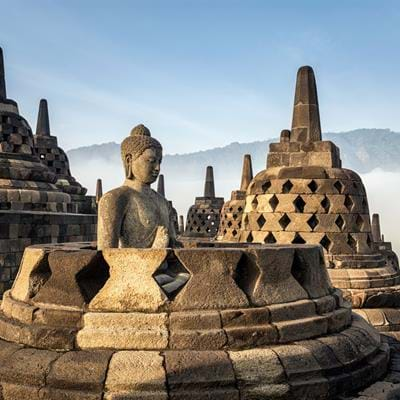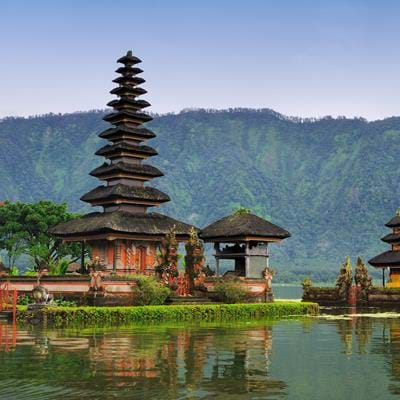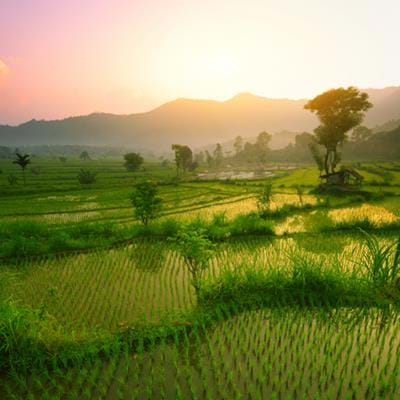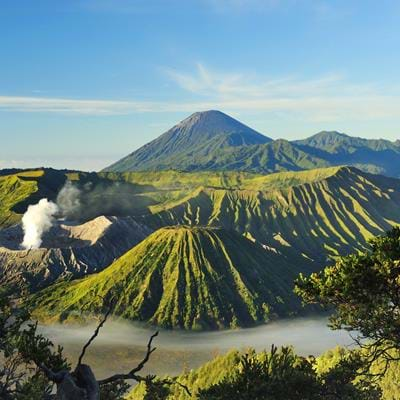Indonesia 07.07.2015 David Abram
The arts and crafts of Indonesia have for many centuries played an integral part in local religious and cultural life. Far more than mere decoration, woven cloth and painting, in particular, were regarded as a means of revealing the divine nature of the universe, playing important roles in rites of passage and temple ceremonies.
Today, the age-old skills developed in the courts of pre-Islamic Java are deployed in a wider range of contents than ever, and travelling around the country you’ll have numerous opportunities to see them being made and used in traditional ways. Light and vibrant, hand-decorated cloth and paintings also make perfect souvenirs, sold in markets and boutiques across the region.
Of all the textiles produced in Indonesia, Batik is the most ubiquitous. You see it everywhere, from the uniforms worn by airline cabin crew to formal shirts, sarongs, ceremonial sashes and head scarves out in the rice fields.
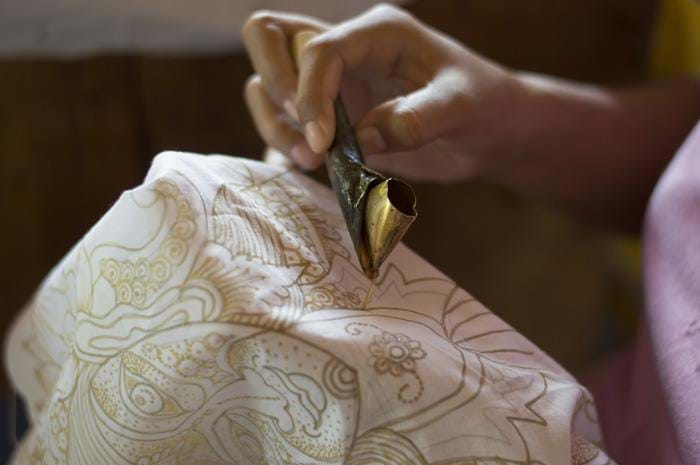
The finest pieces have for centuries been produced in the workshops of Java’s two royal cities, Yogyakarta and Surakarta (Solo), where it evolved as a high art form long before the Islamization of the island in the 1400s. Earthy russet browns, indigos and deep reds set against backgrounds of yellow ochre or cream are the hallmarks of the school, which uses distinctive motifs for different social groups. Foreign influences that have permeated the region through maritime trade are also detectable in the patterns: Persian peacocks, Chinese phoenix, European floral bouquets and Japanese cherry blossom all still feature prominently.
Visit any of the old-family batik factories in the backstreets of Yogya or Solo and you’ll see artisans using a nibbed stylus called a djanting to apply the resist, traditionally made of beeswax. The cloth may be dyed and re-dyed dozens of times to achieve the spectacular multi-hued layering effect.
Thought to have been introduced from India in the 6th or 7th centuries, ikat is another textile that was refined in the courts of Java. Following the demise of the Majapahit Kingdom in the late 1400s, many Javanese aristocrats fled eastwards, taking their most highly prized artisans with them, which is why the art form is nowadays most closely associated with Bali.
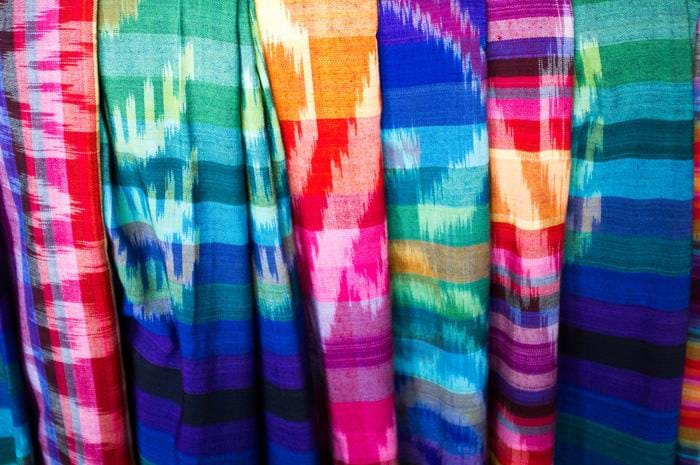
A demanding technique that requires the dyeing of the weft thread to create the finished pattern, ikat is distinguished by its geometric-fuzzy-edged designs. It’s woven in cotton and man-made fabrics, but silk produces the finest items. ‘Endek’, or ‘weft ikat’ is the form most commonly made in Bali, although Tenganan village on the east side of the island is one of only 3 places in the world where intricate ‘double ikat’, known as ‘gringsing’ is still produced. Lengths of this exquisite, luxurious cloth takes months (or even years) to produce and sell for huge sums. The motifs used to create them are infused with spiritual meaning.
‘Songket’ is another Balinese ikat speciality, this time using gold and silver metallic yarn to add motifs. Sarongs woven in the songket style are usually only worn on ceremonial occasions. You’ll also see examples of it used as brocaded sashes by local dancers.
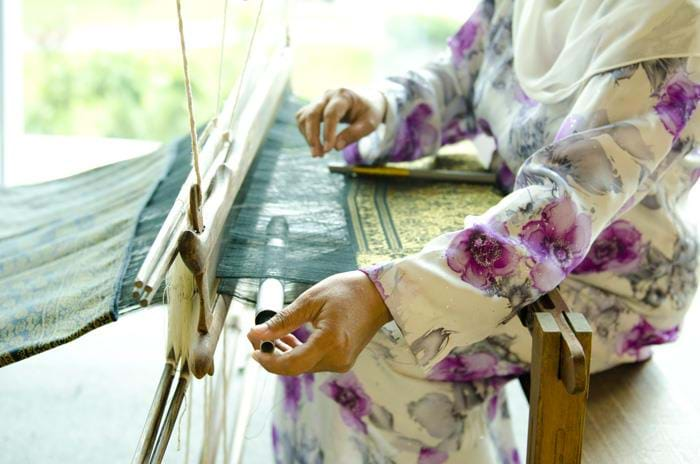
Formerly rendered on bark cloth, Bali’s traditional Kamesan style of painting had its roots in the Majapahit courts of Java, and was used primarily to recite Hindu epics. Royal houses and temples were its principal patrons until the 1920s, when European and Australian artists resident on the island began to influence local painters. The introduction of perspective and principles of anatomy gave rise to a completely new form, which took as its subject matter secular scenes from everyday village life rather than stories from the Mahabharata or Ramayana, and which featured, for the first time, the artist’s own signatures.
The new movement revolved around the town of Ubud and its adjacent villages, and continues to flourish today. Dozens of galleries now promote works by local painters, including some in a naïve folk-art style pioneered in the 1960s by the so-called ‘Young Artists’, featuring child-like figures and blocks of vibrant colour.
